Table of Contents
ToggleMachine Learning and Artificial Intelligence have effortlessly supported every level of organization and business to increase their productivity. The collaboration of these stupendous entities will boost labor productivity by 40% or more by 2035, according to a report by Accenture. The image below shows how AI will impact every industry’s profitability in the future. In this blog, we’ll discuss how industries are leveraging Machine Learning and Artificial Intelligence to grow better in their specific domains.
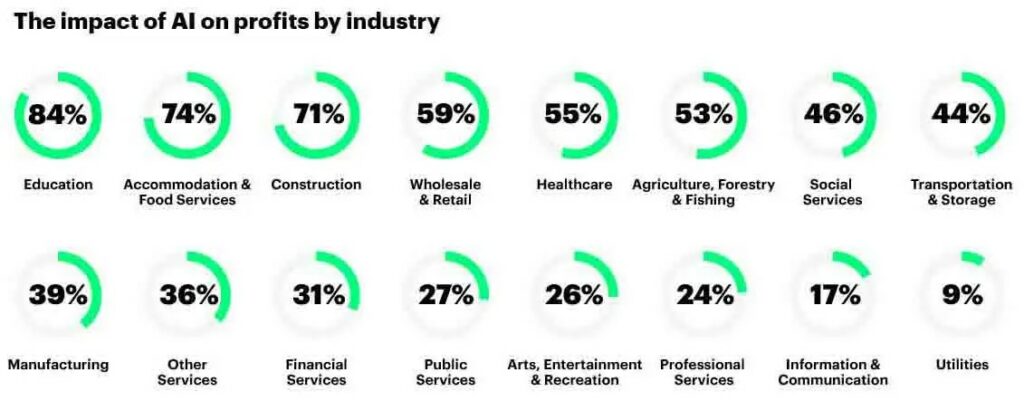
Image Source: newsroom.accenture.com
Rate of AI/ML Technologies Adoption
Since the pandemic hit the market, it slowed the supply chain, and in every other ground of business, remote working has evolved. On top of that, indulging in less human-interacted jobs has also evolved, and that was when business leaders decided to inculcate AI/ML technologies. On what grounds have businesses integrated Machine Learning projects with AI to succeed in their genres?
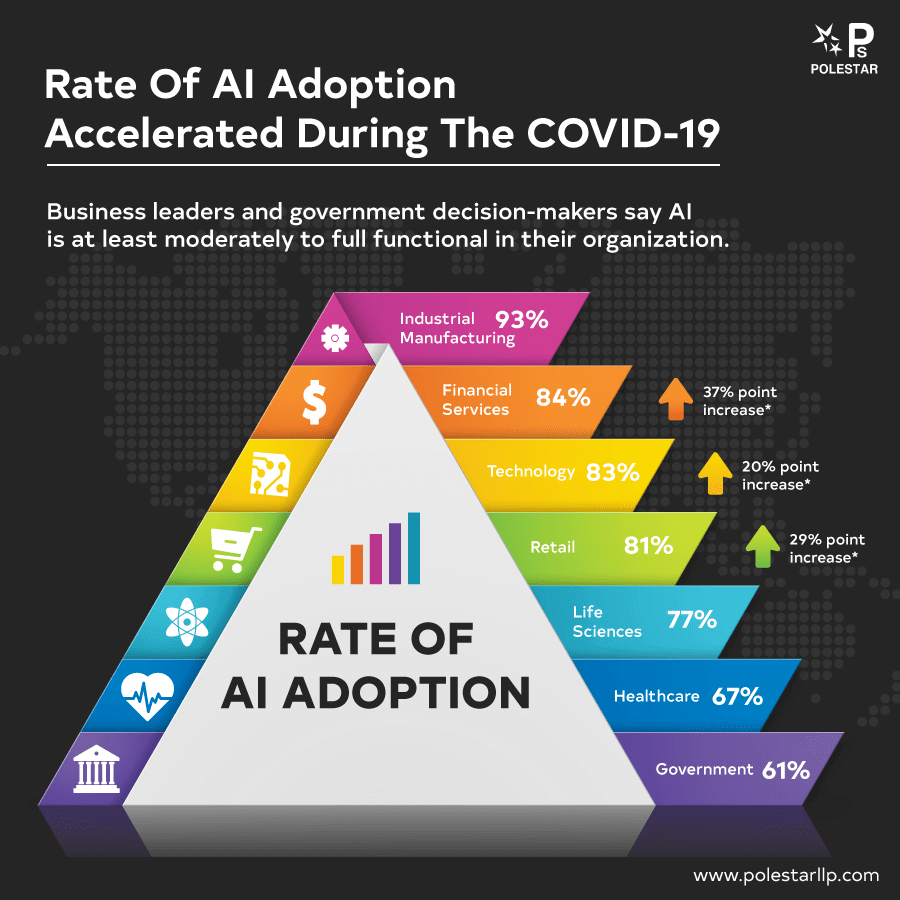
Image Source: Polestarllp
The next image will show Annual growth rates by 2035 of gross value added (a close approximation of GDP), comparing baseline growth to an artificial intelligence scenario where AI has been absorbed into a sector’s economic processes.
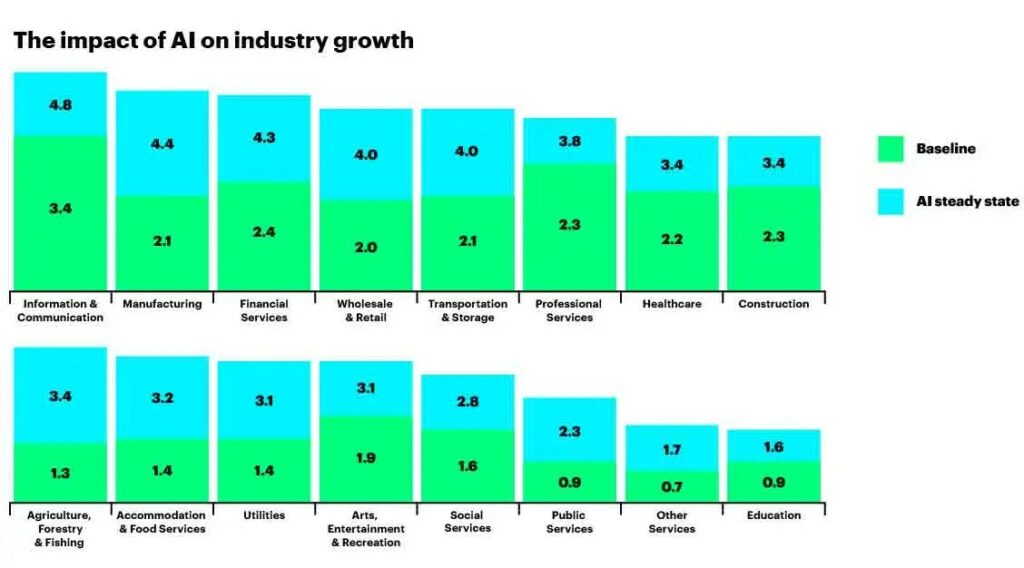
Image Source: newsroom.accenture.com
Brands using Machine Learning Technologies
1. Content Discovery- Pinterest
Pinterest is one of the most versatile platforms with a collection of content; the best part is that it is visually appealing. In 2015, Pinterest acquired Kosei, one of the best minds in Machine Learning and data science. Pinterest is famous for its curated content, and Kosei is boosting the whole idea of content discovery and recommendation algorithms. Nowadays, Machine Learning is involved in almost everything at Pinterest, like keeping out spam, helping you discover content, making money from ads, and keeping more people interested in email newsletters. It’s pretty awesome!

2. Facebook Chatbot
Facebook Messenger has become something of an experimental testing laboratory for chatbots, and it is one of the most used social media messaging platforms in the world. Any developer can make and send a chatbot for Facebook Messenger. This allows companies, even small startups with limited tech capabilities, to use chatbots for customer service and to keep customers engaged.
But that’s not the only way Facebook is using Machine Learning. They’re also applying AI to filter out spam and low-quality content. Additionally, they’re exploring computer vision algorithms to help visually impaired individuals “read” images.

Image Source: Oberlo.com
3. Smart Sales with Hubspot
Just like Pinterest, Hubspot has also entered into an acquisition with a renowned Machine Learning firm Kemvi. Predictive lead scoring is just one of the crucial potential applications of AI and Machine Learning. With Kemvi’s DeepGraph Machine Learning and natural language processing tech, Hubspot is excelling in its internal content management system.

Image Source: Wordstream.com
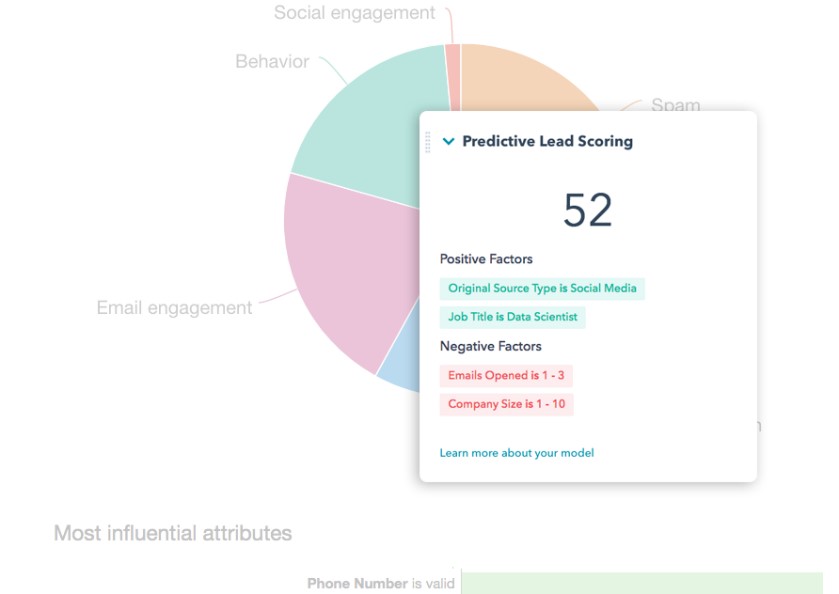
Image Source: Wordstream.com
4. Salesforce’s CRM
Salesforce is a big player in the tech world, especially in helping businesses manage their relationships with customers. One of the tough things for digital marketers is predicting and scoring leads. That’s why Salesforce is investing a lot in its own Einstein Machine Learning tech to tackle this challenge.
Salesforce Einstein enables businesses using Salesforce’s CRM software to examine all aspects of a customer’s relationship, starting from the first interaction to ongoing engagement points. This helps create more detailed customer profiles and pinpoint important moments in the sales process. As a result, businesses can achieve more thorough lead scoring, provide better customer service (leading to happier customers), and discover more opportunities.
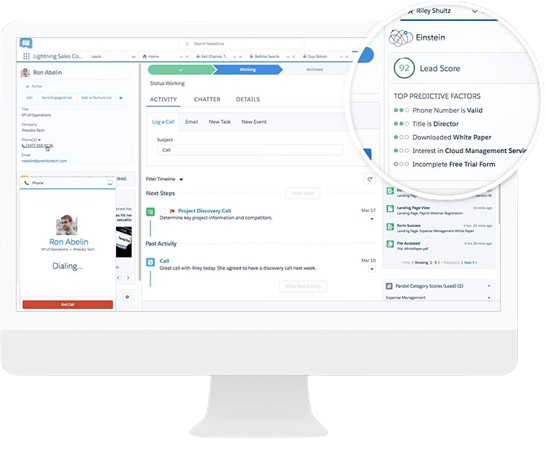
Image Source: Wordstream.com
5. Google Neural Network
Neural Network by Google is one of the most significant platforms for tech nerds.
One of the standout advancements in Google’s neural network research is the DeepMind network, often called the “machine that dreams.” This is the same network responsible for generating those widely discussed psychedelic images.
Google states that its research covers “virtually all aspects of Machine Learning.” This broad exploration is expected to bring about exciting progress in what Google terms “classical algorithms” and other applications, such as natural language processing, speech translation, and systems for predicting and ranking search results.

Image Source: Blog.Research.Google
Future of Machine Learning
Machine Learning and Artificial Intelligence are the most researched and popular technologies that the entire globe is running after. Hash Studioz Technologies indicates that the global market size for ML is projected to hit $209.91 billion by 2029, experiencing a notable Compound Annual Growth Rate (CAGR) of 38.8%.
Machine learning, a subset of artificial intelligence, has an impact that ranges from forecasting the spread of diseases like COVID-19 to supporting advanced cancer research. Therefore, it is becoming almost impossible for everyone to imagine a fully functioning world without AL and ML.
Trends in Machine Learning
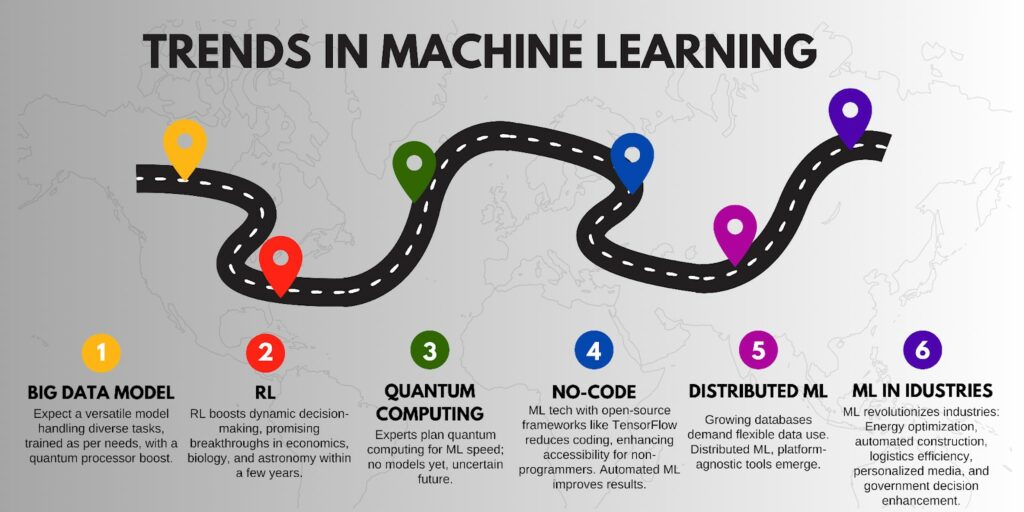
1. The Big Model Creation
An all-purpose model with the ability to simultaneously multitask is expected to emerge in the next few years. You actually won’t need to understand the framework’s applications, while the model will be trained in a plethora of domains that depend on what your organization or business is demanding. A well-designed quantum processor will certainly boost ML capabilities.
2. The Power of Reinforcement Learning
Reinforcement learning (RL) will support companies in making smart business decisions in a dynamic setting without being specifically taught. RL is expected to provide us with new ways to deal with unforeseen circumstances and therefore, enhance the predictive modeling in a better way. Within the next few years, we will likely see several breakthroughs in RL in industries like economics, biology, and astronomy.
3. The Quantum Computing Effect
Experts in the industry are planning to integrate a quantum computing-based approach to optimize Machine Learning speed. It will boost simultaneous multi-stage operations such as reducing execution times in high-dimensional vector processing. There are currently no such models available on the market, but tech giants are working hard to develop them. It can be difficult to predict Machine Learning’s future due to uncertainty.
4. No-Code Environment
Machine Learning technology when collaborated with open-source frameworks like TensorFlow, sci-kit-learn, Caffe, and Torch will automatically reduce coding efforts for data teams. This will be a phenomenal aspect in the world of non-programmers who can refer to online packages for addressing coding scenarios. Additionally, automated Machine Learning will improve results and analysis quality.
5. Distributed ML Portability
With the growth of databases and cloud storage, data teams seek greater flexibility in dataset usage. Advancements in distributed Machine Learning will eliminate the need to build algorithms from scratch for each platform, enabling seamless integration of work into new systems. This suggests a future where ML tools run effortlessly on diverse platforms, eliminating the need for toolkit switches, with discussions among experts focusing on abstraction layers to facilitate this technological leap.
Industries Disrupted by Machine Learning
Machine Learning is poised to disrupt even more industries in the future. Here are a few examples:
- Energy: Machine Learning can be used to optimize energy production and distribution, improve energy efficiency, and develop new renewable energy sources.
- Construction: Machine Learning can be used to automate tasks, improve safety, and reduce costs.
- Logistics: Machine Learning can be used to optimize transportation routes, improve fleet management, and reduce delivery times.
- Media: Machine Learning can be used to personalize content recommendations, develop new forms of interactive media, and automate content creation.
- Government: Machine Learning can be used to improve public safety, streamline government services, and make better decisions.
Conclusion
With the latest concepts and tactics, tech experts are leveraging the best utilities of Machine Learning. Industries are already exercising superior Machine Learning projects by addressing the pain points of the customers and thereby, growing better. Machine Learning is a classic asset of Artificial Intelligence and together they’re bringing top-notch revolution in the world ranging from healthcare to sports. If you’re the one who’s looking for a career in Machine Learning and bringing substantial changes to the world, this is the time!
